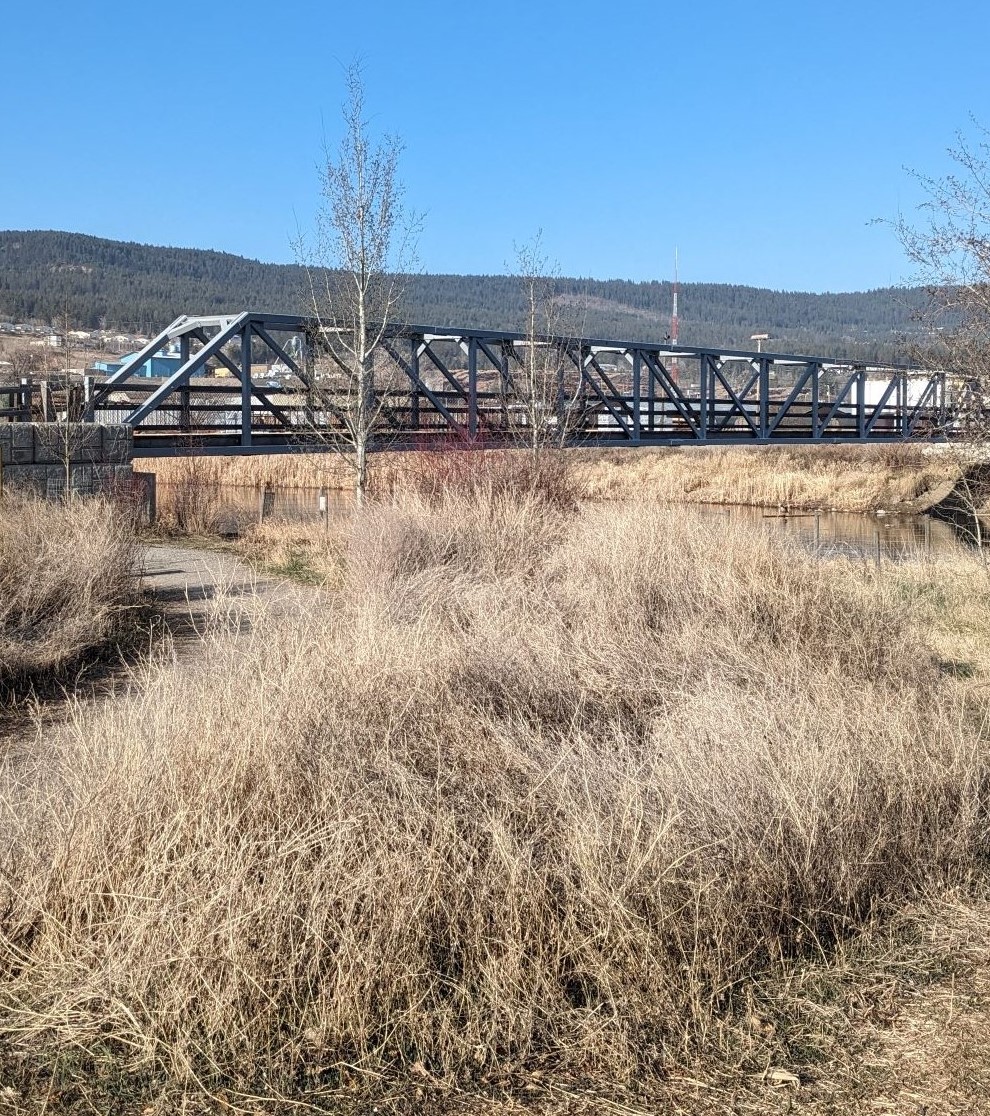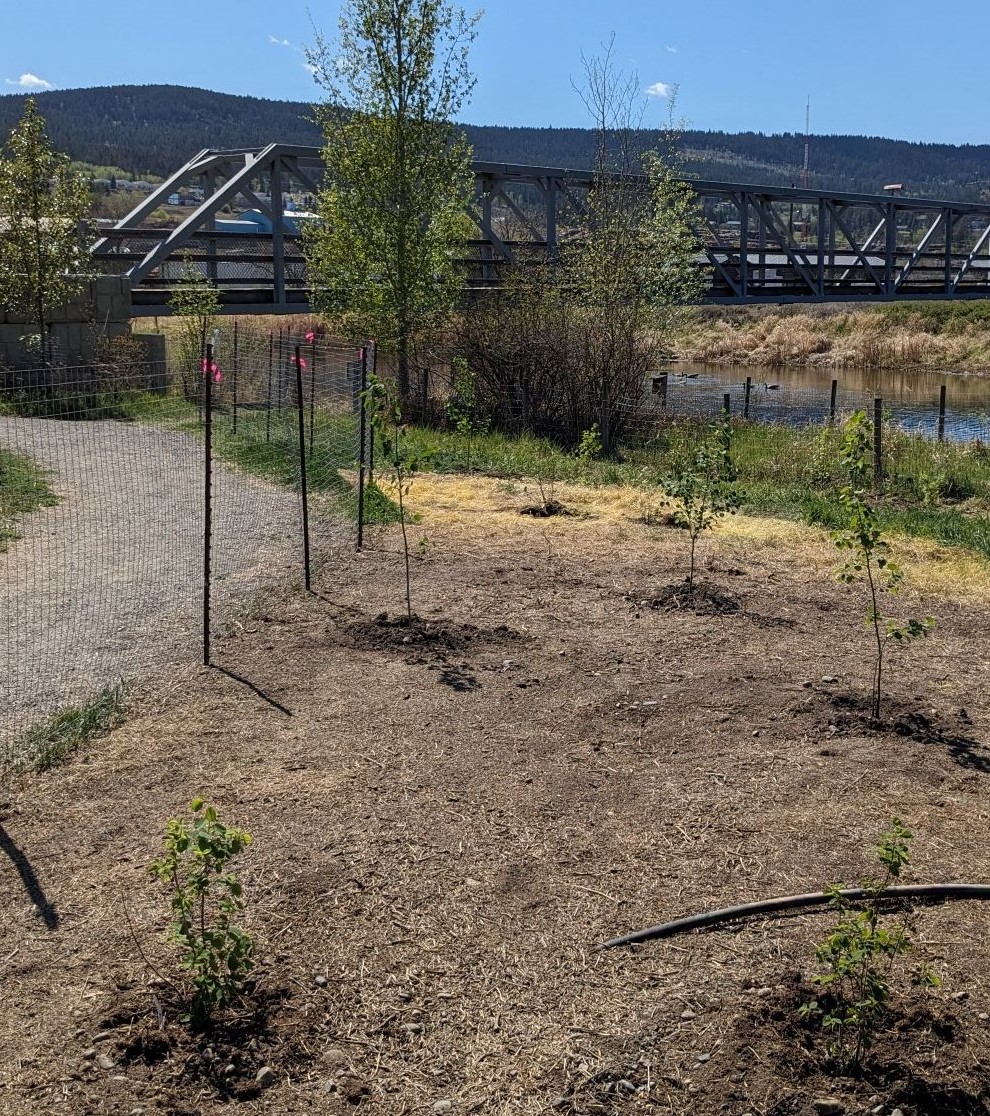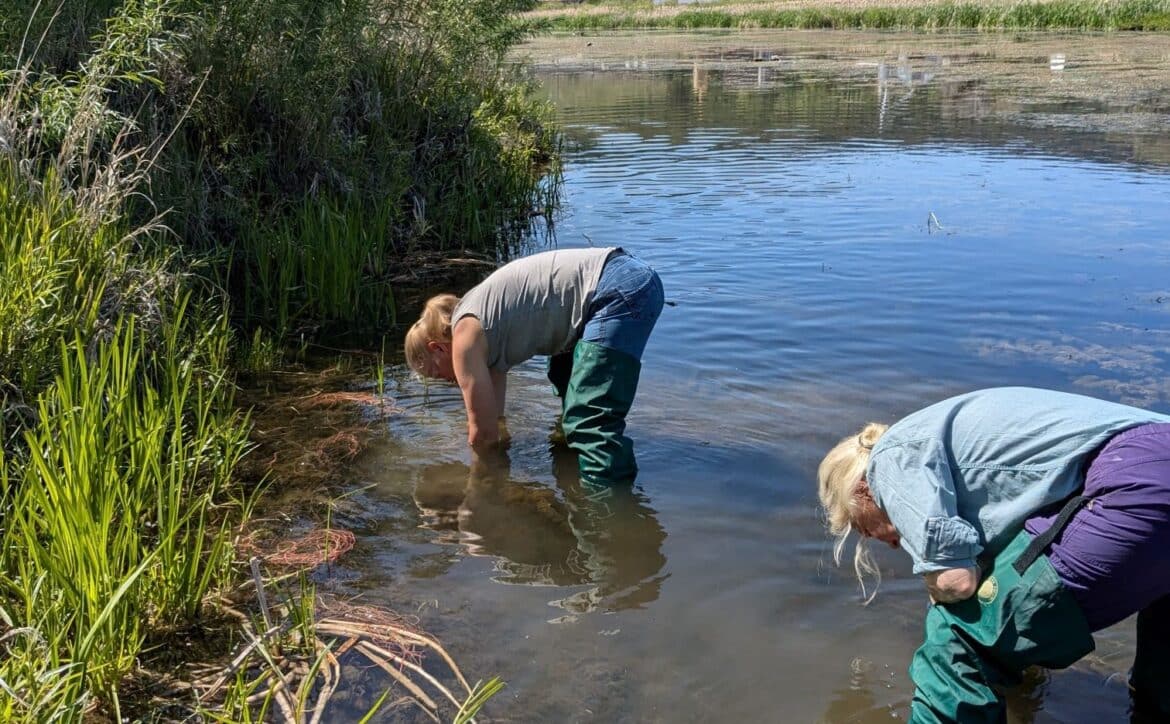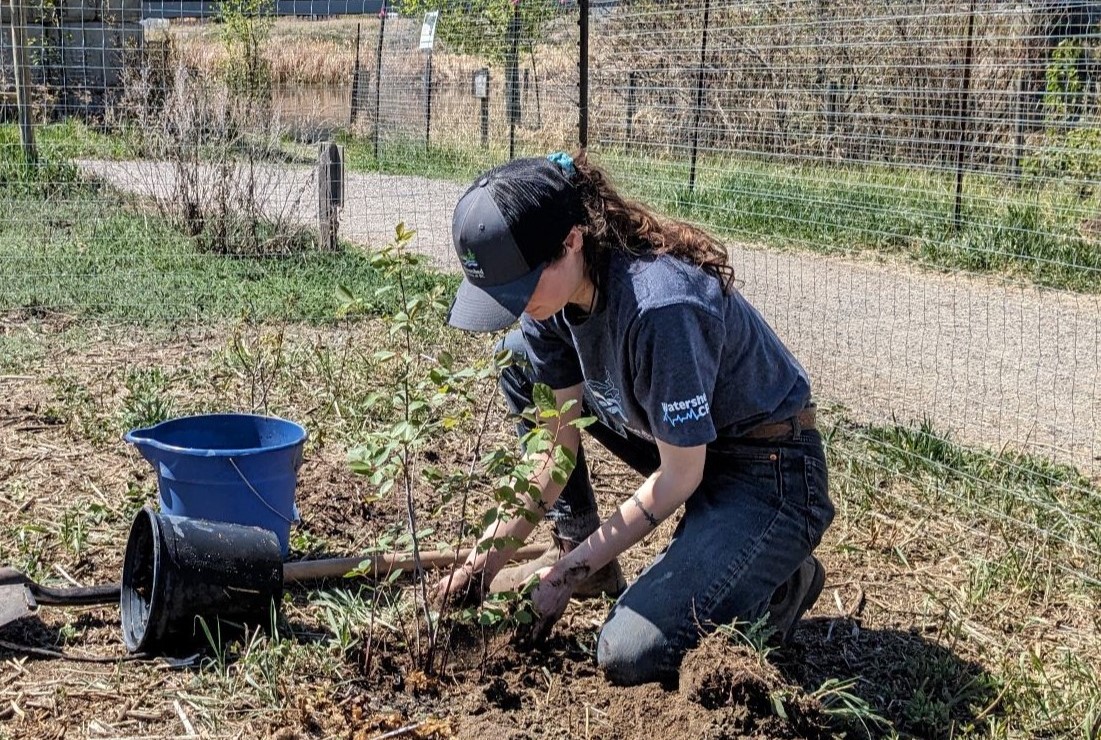By Emma Nikkel | July 15, 2024
Big projects are happening in the Cariboo! Through Environment and Climate Change Canada’s EcoAction funding program, an area of Scout Island, Williams Lake was chosen to host habitat restoration work with the help of the community. In partnership with the Williams Lake Field Naturalists and the directors of Scout Island Nature Centre, the area was chosen due to the numerous invasive plants located there (such as Canada thistle, burdock, and bull thistle), its use as an educational site for students, and the dock access it provides for the annual release of salmon fry.
In 2023, 11 adults and 136 students participated in bioblitzes, which helped to develop a list of native and invasive species in the area. Many thistles were removed thanks to community members and student groups participating in weed pulls.
In April 2024, the next phase of the project began. Through a generous donation from Gibraltar Mines, 65 native plants were purchased to be planted in the area. These species ranged from trees (such as black cottonwood and trembling aspen) to shrubs (such as saskatoon berries and red osier dogwood), chosen based on their moisture and sunlight requirements. Some species, like the Bebb’s willow, were planted in the riparian area while others, like Douglas fir, were planted further upland in the shade of existing plants.


The team from Gibraltar was keen to assist with site preparation, clearing invasive species and installing fencing to keep deer and beavers away from any newly planted vegetation. Over two full workdays, 10 Gibraltar volunteers removed 53 bags of invasive plants and installed approximately 118m of fencing.
Gibraltar volunteer team leader, Steve O’Hara, shared the impact the project had on his team, saying, “I think we all are glad that we had the chance to help with such an initiative, for an area we all love. I feel a project like this makes individuals feel good about themselves, by positively enhancing the area rather than hindering it like most human interactions with nature. It was a great project and nice way to give back to our community.”
On May 11th, ISCBC hosted a public planting day at Scout Island, and seven community members came out to plant the native species within the fenced area. As some plants required individual fencing due to the location, Gibraltar volunteers once again joined for a full workday of planting, installing fencing, and setting up irrigation for the summer.
On June 21st, with the help of a couple Williams Lake Field Naturalists, the last of the planting was complete with the addition of 20 native aquatic species – cattails and sedges – to the nearby shoreline.

The community has gone above and beyond for this project. Continuing into the summer months, there are countless volunteers supporting the continued management of invasive species in the area and ensuring that the newly planted native species thrive.
Thank you to all who participated, and will continue to participate, in this project! And a special thank you to Scout Island Nature Centre Co-Director, Sue Hemphill, for her incredible support in moving this project forward. To hear about any future events, please be sure to follow us on social media!

Emma is an Outreach Coordinator at ISCBC in the Cariboo region. She is passionate about community engagement and sharing her love of nature – especially plants! In her spare time, she enjoys knitting, gardening, and exploring new places. You can reach Emma at enikkel@bcinvasives.ca.
Share


















